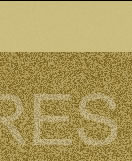|  Michel KODJO : “ I can't help suffering from Michel KODJO : “ I can't help suffering from
the plight of the others”
Humanity in a woman's face.
Long gone is the time when the young Michel KODJO,
practising artistic drawingwith
the help of a half-caste cousin who was a border at
the Bingerville orphanage
of Grand-Bassam, was holding an exhibition of his works in that year
of 1957 on
the picture rails of the Abidjan City Hall . A real première for a local
artist still subject
of the Ivorian Nation in the making.
Long gone indeed is the time when this living monument of the young history
of contemporary art in Côte d'Ivoire, spurred by the success in France of his
mythical fellow countryman Christian LATTIER, held that exhibition containing
some work that had a whiff of naïvety, as he acknowledges with a touch of humor.
But the distorting anxiety of the process of creation is overwhelmingly present with
Michel KODJO in his fierce determination to leave a work that brings civilization,
progress, necessary to the evolution of Man; an artist who has never been
content with his well-established reputation gained through his countless
exhibitions around the world all along his long career as a painter and a teacher .
“This goes far beyond my own personal situation” he admits,
before adding : “I have now reached a point where I can't help suffering
from the plight of the others. I am surely going to die one day, but when
I see someone suffering from an illness, or from misery, I feel the same disarray.
It is therefore in the quest for the causes of this suffering that the
artist Michel KODJO establishes the source of inspiration for his
work, which he justifies
in this way : “any people needs to be at ease, to evolve, and the
lack of ease and evolution shows more on the face of the woman
than any other being. The woman gives birth and life. The woman
takes care of the child for life.” It is these women's faces painted in
blue and gold that haunt and convey all that feeling to the artist's
paintings, thus setting his work apart and making it different from
the other artists' approaches in dealing with the theme of the Woman.
|










